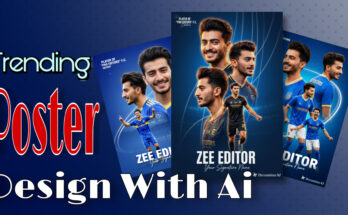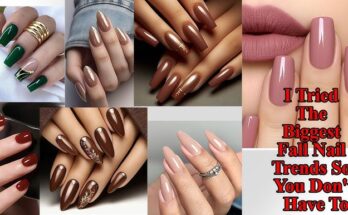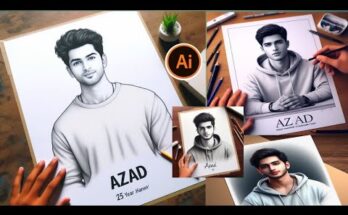New Snowfall Trending AI Effect: Transforming Visuals One Flake at a Time
Meta description suggestion:
Discover the “Snowfall AI Effect” — why it’s trending, how creators use it, top tools, tips & tricks, and FAQs to master this dreamy visual trend.
Table of Contents
-
Introduction: What is the New Snowfall AI Effect?
-
Why It’s Trending Now
-
How the Effect Works (Technical Breakdown)
-
Top Platforms & Tools Offering Snowfall AI Effect
-
Step-by-Step Guide: How to Apply the Snowfall Effect Like a Pro
-
Creative Ideas & Use Cases
-
Best Practices & Tips for Realistic Snowfall
-
Pros & Cons / Challenges
-
The Impact on Social Media & Branding
-
Future of AI Effects like Snowfall
-
FAQs
-
Conclusion
1. Introduction: What is the New Snowfall AI Effect?
Imagine taking a photo or video—maybe something simple like walking through a park, a cityscape, or a cozy indoor scene—and with one tap or a few clicks, it’s as though gentle snowflakes are drifting onto the screen. That’s the Snowfall AI Effect: a visual filter overlay or AI-powered effect that adds animated or stylized snowflakes, snow drifts, or winter ambience to your media.
This trend gained rapid traction recently on platforms like Instagram, TikTok, and video editing apps. It isn’t just about seasonal style; it taps into nostalgia, cinematic aesthetics, mood-setting visuals, and emotional storytelling. In 2025, with more creators demanding visual uniqueness and faster content creation, effects like these are becoming essential parts of creative kits.
2. Why It’s Trending Now
Several reasons combine to make the Snowfall AI Effect explode in popularity:
-
Ease and accessibility: Where once adding realistic snow meant complex editing or hiring specialists, now many apps have built-in filters or simple AI tools. Even beginners can make content look cinematic. For example, Meta’s Restyle in Instagram allows creators to apply snow or other ambient effects easily. The Week
-
Emotional resonance & mood: Snow evokes strong emotions—quiet, calm, nostalgia, a sense of magic. In a fast-paced, digital world, people are drawn to visuals that slow them down emotionally.
-
Aesthetic & visual storytelling: Creators want more than plain video or static images. Snow adds motion, depth, texture, and atmosphere.
-
Social media algorithms favor trending effects: Platforms often promote content using new filters or effects, so using the snow filter might get extra reach. The Week+2Pippit+2
-
Seasonality + perpetual winter aesthetics: Even out of winter, creators want the “wow” effect—romantic winter, cozy vibes, cinematic looks. The snow effect can be used year-round.
-
Growing AI & filter tool sophistication: Better AI, better background detection, better lighting integration—all make the effect more realistic and less work. Tools like Pippit, CapCut, etc., are pushing these advances. Pippit+2CapCut+2
3. How the Effect Works (Technical Breakdown)
To understand why some snow effects look amazing and others look fake, it helps to know what goes on behind the scenes.
Core Components
-
Overlay / Layering
The snow is often implemented as an overlay—graphics or animation layers of snowflakes, opacity, size, fall direction etc. Some effects use multiple layers: near flakes (large, slow fall), distant flakes (small, fast fall), maybe drifting or bouncing snow on surfaces. -
Background / Scene Analysis
For more advanced AI effects, the tool analyzes the existing video/image: lighting, colors, movement, depth. This helps integrate the snow in a way that matches the ambient lighting and makes snowflakes look “in front of” or “behind” elements appropriately. -
Motion & Animation Dynamics
Snow doesn’t just fall straight down at same speed. Wind, drift, variability, direction, density—all matter. Advanced tools simulate wind, random fall paths, maybe depth of field (foreground vs background blur) to give realism. -
Edge detection & Occlusion
Where an object in scene is supposed to block or obscure snowflakes (e.g., a pole, a person walking in front), realistic effects will have snowflakes “behind” or partially hidden. Basic overlays skip this; better AI effects do occlusion modelling. -
Color & Light Integration
Snow reflects ambient light. If scene has warm lighting (sunset), snow might pick up orange/pink tones; in cool lighting (night, blue tones), snow might be bluish. Shadows, reflections etc., if modelled, increase realism. -
Performance & Optimization
AI tools must do all this fast. On mobile devices with modest hardware, the effect must be efficient. Hence many filters precompute or simplify.
4. Top Platforms & Tools Offering Snowfall AI Effect
Here are some tools, platforms, and apps where you can find or use Snowfall AI Effects, with features & pros-cons.
| Tool / Platform | Key Features | What Makes It Good / Unique |
|---|---|---|
| Instagram / Meta (Restyle, Edits etc.) | Built-in snow overlay filters, seasonal ambient effects, “one-tap” apply, share directly. The Week | Very accessible, no separate app needed. Massive reach, especially for Reels. |
| CapCut | Snowfall templates, layering, video editing, transitions, control over intensity etc. CapCut | Popular among creators; strong library of templates. |
| Pippit.ai | Snow effect templates, overlays, video & image snow effects, customizable density & style. Pippit+1 | Easy drag-and-drop; color & style matching; good for e-commerce and visual marketing. |
| Free Snow Effect Generators (web tools) | Upload image, adjust snowfall style/density, download. piax.org | Great for non-video content, social media posts, quick edits. |
| Other Filters / AI tools | Reelmind.ai prompts & presets for snowfall animation, advanced video generation. Reelmind | For creators who want stylized or narrative animations with consistent characters etc. |
5. Step-by-Step Guide: How to Apply the Snowfall Effect Like a Pro
Here is a detailed walkthrough to get the best results. You can adapt these steps depending on your tool.
Step 1: Choose Your Base Media
-
Decide whether image or video. Videos often look more dramatic, because snow movement adds life.
-
Pay attention to lighting conditions in the original media—daylight, golden hour, night etc.
Step 2: Pick the Right Tool
-
If you need quick results, use built-in filters (Instagram, CapCut).
-
If you want custom control (density, color, occlusion etc.), use advanced editors or AI-powered tools.
Step 3: Adjust Snow Density, Size & Style
-
Density: How many snowflakes. Too many → cluttered; too few → doesn’t show enough.
-
Size: Big flakes close to camera; small ones far away. Helps add depth.
-
Movement / Wind: Slight horizontal drift or variation gives realism.
-
Opacity / Softness: Very opaque flakes look harsh; soft translucent flakes look better.
Step 4: Match Snowfall to Lighting & Color Grading
-
Color match: If scene is warm, snow might pick up a warm glow; in cold/winter scenes, cooler tones.
-
Shadows / Highlights: Snowflakes can reflect light—bright when sun hits, more visible. In shadow, less visible.
Step 5: Use Foreground and Background Layers
-
If possible, separate foreground (subject) and background, apply snow differently. Snowflakes close to camera might be blurrier, larger. Background snow should be smaller, maybe more faded.
-
Use occlusion if effect supports it: let snow pass behind objects or people in foreground.
Step 6: Timing, Transitions & Animated Movement
-
For video, vary snowfall speed over time; maybe start slow, pick up, then fade.
-
Use transitions: begin with no snow, then gradually introduce snowfall; likewise to end.
-
Sync snow effect with other visual or auditory cues (music beat, scene change etc.).
Step 7: Fine-tune & Export
-
Preview on same size/resolution as target platform (e.g. phone screen, Instagram reel).
-
Check performance: effect fluidity, doesn’t lag. Some tools allow lowering frame rate or resolution if needed.
-
Export in high quality; consider format compatibility (mp4, mov etc.) and compression effects on fine details like snow.
6. Creative Ideas & Use Cases
Here are ways you can use the Snowfall AI Effect creatively — beyond just “it looks nice.”
-
Seasonal Content & Marketing
Perfect for winter campaigns, holiday sales, greeting cards, festive promotions. Brands can use snowy overlays to evoke holiday emotions. -
Storytelling & Mood Videos
Short stories, cinematic clips, reflective moments (e.g. walking alone, introspective scenes). Snow adds a dreamy or nostalgic atmosphere. -
Travel & Landscape Transformations
“What if” visuals: how a city, a landmark, or your hometown might look in snow. These often go viral as they show familiar places in unexpected ways. (Example: Jaipur visualised under snow via AI.) www.ndtv.com+1 -
User-Generated & Social Media Engagement
Challenges / filters: ask followers to post something with snow overlay; remix winter memories or rare snowfall videos. -
Photography Edits
Landscape, portraits: add snow to increase mood, contrast; use mild snowfall for bokeh effects etc. -
Advertising & Branding
Winter product launches; seasonal packaging previews; emotional branding adverts with snow to evoke coziness or purity. -
Music Videos & Cinematic Short Films
Snow works well with slower songs, peaceful scenes, intros, outros. It can also be juxtaposed with chaos (e.g. urban environment + snow) for effect.
7. Best Practices & Tips for Realistic Snowfall
To make your snowfall effect look good (not cheesy or fake), follow these tips:
-
Keep variation: change size, speed, opacity. Uniform snow looks boring/fake.
-
Use multiple layers (foreground, background) for depth.
-
Match lighting & color grading. If your video/image has warm tones, don’t make snow stark white; give warmth or color reflection.
-
Add blur / focus: nearby snowflakes slightly out of focus; distant snow sharp/fainter.
-
Use occlusion if possible (snow passing behind objects).
-
Avoid oversaturation: snow effect shouldn’t distract. Subtlety often wins more engagement.
-
Ensure motion is natural: no constant straight lines unless stylized; drifting, slight sway, randomness helps.
-
Test on different devices: something that looks good on desktop may perform poorly on phone screen.
8. Pros & Cons / Challenges
Understanding the limitations helps you decide when and how to use the effect.
Advantages
-
Enhances engagement: eye-catching, mood-evoking content tends to get more views/shares.
-
Set mood & atmosphere easily.
-
Adds value to visuals without major production.
-
Very accessible now via apps/tools.
Disadvantages / Challenges
-
Overuse can make content look repetitive or cliché.
-
If badly done, effect looks fake—ruining realism.
-
Lighting mismatch or unnatural snow motion can break immersion.
-
On lower-end devices, effects may lag or degrade.
-
File size / rendering time might increase.

Generate ApK
Generate iOS
11. FAQs
Below are common questions & answers to help you master the Snowfall AI Effect.
| Question | Answer |
|---|---|
| 1. Does the effect work on all devices? | Many filters & apps support modern phones well; older or low-powered phones may lag or struggle with smooth animations, especially with high density snow and high resolution. Try reducing effect quality or resolution. |
| 2. Can I add snowfall to existing videos/photos I already took? | Yes, almost all tools let you import existing media and apply the effect. The quality depends on how clean and well-lit your original media is. |
| 3. How do I avoid “snow looks fake”? | Use multiple layers, match lighting, add blur, vary size & speed, include occlusion, avoid overuse. Subtle snow often looks more natural than heavy overlay. |
| 4. Which apps are best for beginners? | Instagram (Restyle), CapCut, Pippit.ai, free web generators. They have templates and presets—easy to use. |
| 5. What about copyright / licensing? | Be sure the snow templates or overlays you use are licensed or free for use, especially for commercial content. Template tools often have built-in licensing. |
| 6. Does using snow effect increase video size / load times? | Yes it can. Higher resolution, higher frame rate, more complex overlays increase file size. For social media, sometimes downscaling or compressing is necessary. |
| 7. Can I animate snowfall (not just overlay static snow)? | Yes. Video editing apps or more advanced tools allow animated flakes, motion paths, drift, variability. |
| 8. Is snowfall effect only for winter/holiday content? | Not necessarily. Many creators use snow for dramatic effect, mood, aesthetic, even fantasy or conceptual content. |
| 9. How do I sync snow effect with music/sound? | You can time transitions (start/end of snowfall), sync density changes with music beats, slow down or speed up snow movement in accord with mood of music. |
| 10. Will this effect remain popular? | Likely yes, because creators love atmospheric visuals. But trends evolve, so combining with new innovation (AR, interactivity, realism) will be key to staying ahead. |
12. Conclusion
The Snowfall AI Effect is more than just a pretty filter—it’s a tool that merges emotion, visual storytelling, and accessible creativity. Whether you’re a casual content creator, photographer, brand marketer, or someone just wanting to create something magical, adding snowfall effects can elevate your visuals dramatically.
If you’re just starting out, use a simple filter, try subtle snowfall, observe how lighting & motion affect outcome. As you get more confident, experiment with layering, occlusion, combining with other ambient effects.



